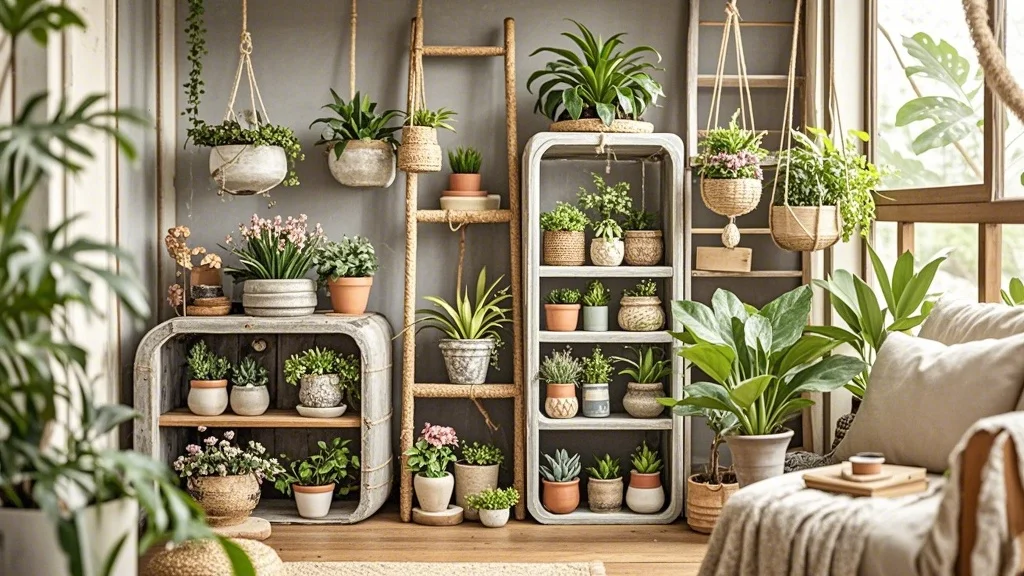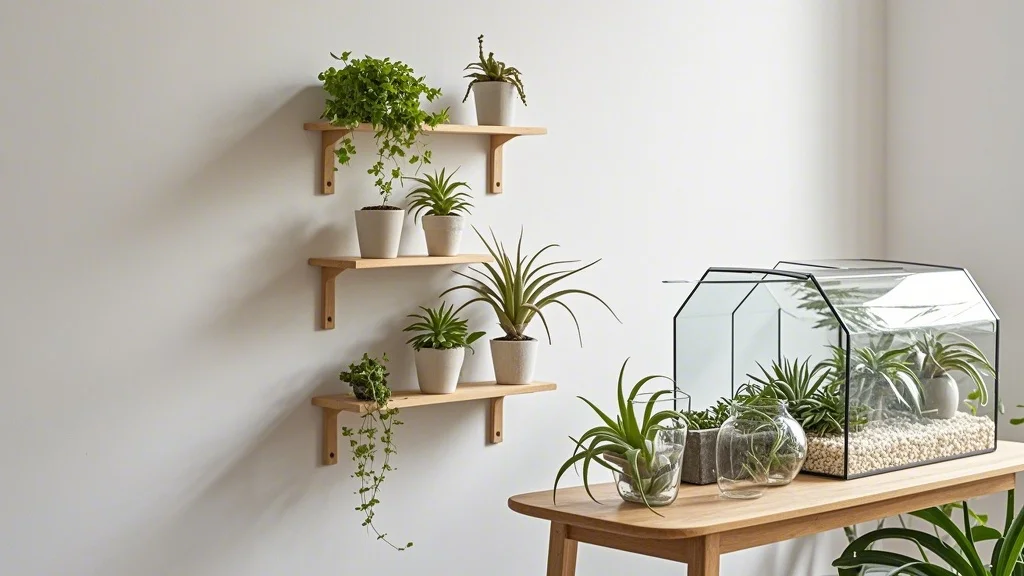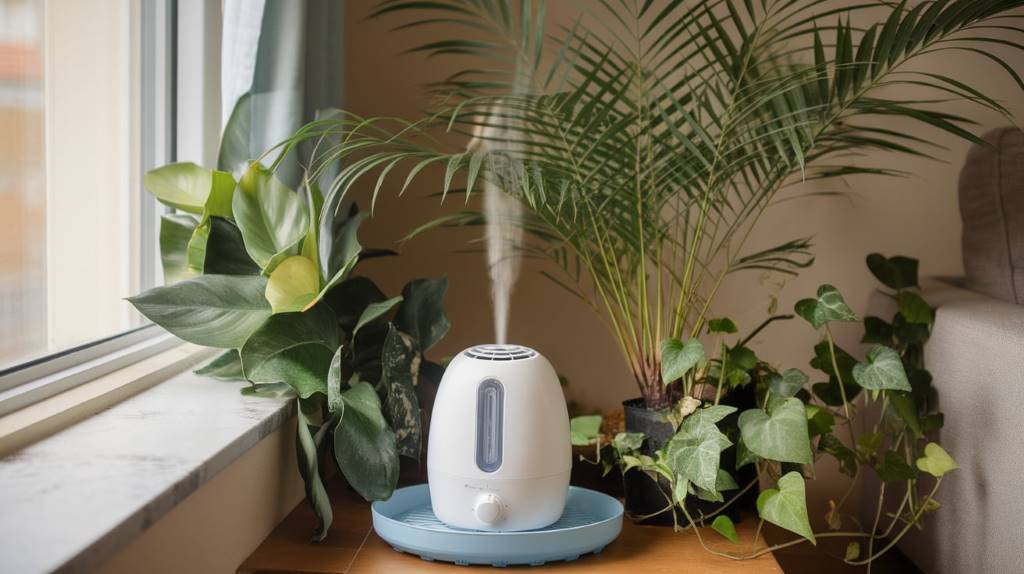Living in a small apartment doesn’t mean you have to give up on your dream of multiplying your plant collection. With some creativity and smart planning, you can set up a compact propagation station that fits seamlessly into your tiny home. This guide will walk you through creating an efficient setup for growing new plants without sacrificing precious space.
Contents
- 1 Understanding Plant Propagation
- 2 Choosing Your Propagation Space
- 3 Essential Components of a Small Space Propagation Station
- 4 Setting Up Your Small Space Propagation Station
- 5 Space-Saving Propagation Techniques
- 6 Maintaining Your Propagation Station
- 7 Troubleshooting Common Propagation Issues
- 8 Creative Display Ideas for Your Propagation Station
- 9 Conclusion
Understanding Plant Propagation
Before diving into the setup, let’s briefly review what plant propagation entails:
- Definition: Plant propagation is the process of creating new plants from existing ones.
- Methods: Common techniques include stem cuttings, leaf cuttings, division, and air layering.
- Benefits: Propagation allows you to expand your plant collection for free and share plants with friends.
Choosing Your Propagation Space
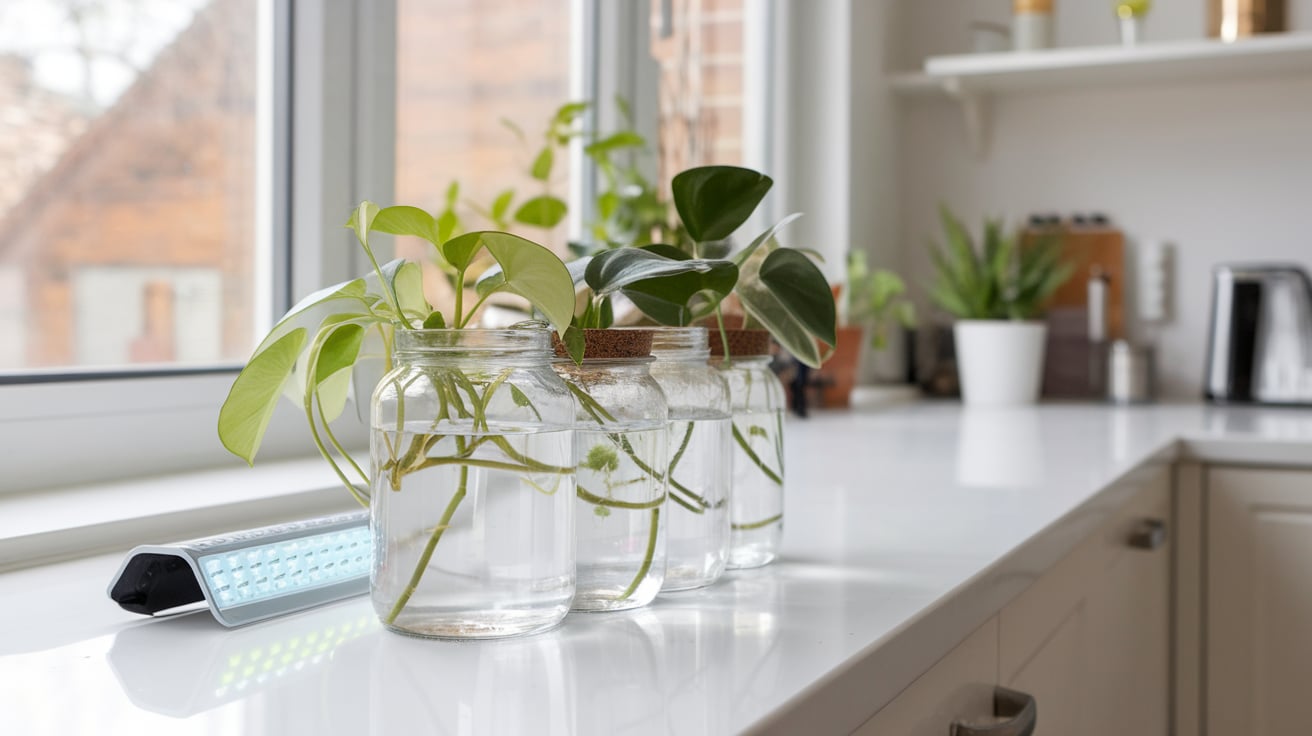
In a small home, every inch counts. Consider these space-saving locations for your propagation station:
- Window sills: Utilize natural light and existing space.
- Floating shelves: Install narrow shelves above furniture or in unused corners.
- Vertical wall systems: Use hanging pockets or modular wall planters.
- Bathroom counters: Take advantage of humidity for certain plants.
- Kitchen counters: Use a small section for herbs and easy-access plants.
Essential Components of a Small Space Propagation Station
1. Lighting
Proper lighting is crucial for successful propagation. Options include:
- Natural light: Position your station near a bright window, ideally east or south-facing.
- Grow lights: Use compact LED grow lights for spaces with limited natural light.
- Clip-on grow lights
- Under-cabinet LED strips
- Tabletop grow light stands
2. Propagation Containers
Choose space-efficient containers that suit your aesthetic:
- Clear glass jars: Repurpose mason jars or small vases.
- Test tubes: Create a sleek, minimalist look with a test tube propagation rack.
- Propagation stations: Purchase or DIY wooden or metal stands with small glass containers.
- Self-watering propagation systems: Invest in compact, low-maintenance options.
3. Growing Medium
Select the appropriate medium based on your propagation method:
- Water propagation: Use clean, room-temperature water.
- Soil propagation: Choose a well-draining potting mix or create a custom blend.
- Perlite or vermiculite: Use for delicate cuttings or as a soil amendment.
4. Tools and Accessories
Keep these essential tools nearby in a small organizer:
- Sharp, clean scissors or pruning shears
- Rooting hormone (gel or powder)
- Small spray bottle for misting
- Plant labels or markers
- Tweezers for delicate work
Setting Up Your Small Space Propagation Station
Follow these steps to create an efficient and attractive propagation area:
- Choose your location: Select a spot with adequate light and easy access.
- Install shelving or hanging systems: If needed, set up your chosen storage solution.
- Arrange lighting: Position grow lights or ensure natural light reaches all plants.
- Organize containers: Group similar plants or propagation methods together.
- Prepare tools: Keep frequently used items within arm’s reach.
- Label clearly: Use a consistent labeling system for easy tracking.
- Incorporate humidity: For tropical plants, add a small humidifier or pebble tray.
Space-Saving Propagation Techniques
Maximize your limited space with these efficient propagation methods:
1. Water Propagation
Perfect for many houseplants, water propagation is clean and compact:
- Use small, clear containers to monitor root growth.
- Change water weekly to prevent algae growth.
- Ideal for pothos, philodendron, monstera, and many succulents.
2. Leaf Propagation
Excellent for plants that can grow from a single leaf:
- Use shallow trays with a humidity dome.
- Works well for snake plants, ZZ plants, and many succulents.
3. Air Layering
This method allows you to propagate larger plants without taking up extra space:
- Ideal for rubber plants, fiddle leaf figs, and other woody plants.
- Requires minimal equipment and can be done on the parent plant.
4. Propagation in Clear Plastic Bags
Create mini greenhouses for high-humidity loving plants:
- Use zip-lock bags or clear plastic containers.
- Great for calatheas, ferns, and other moisture-loving plants.
Maintaining Your Propagation Station
Keep your small space propagation area thriving with these tips:
- Regular cleaning: Wipe down surfaces and sterilize tools to prevent disease spread.
- Rotate plants: Ensure even growth by rotating containers regularly.
- Monitor humidity: Use a small hygrometer to track humidity levels.
- Pest prevention: Inspect new cuttings and isolate if necessary to prevent infestations.
- Prune and tidy: Regularly remove dead leaves and trim overgrown plants.
Troubleshooting Common Propagation Issues
Address these frequent problems in small space propagation:
- Leggy growth: Increase light or move plants closer to the light source.
- Slow rooting: Check water quality, temperature, and consider using rooting hormone.
- Fungal growth: Improve air circulation and reduce excess moisture.
- Yellowing leaves: Assess light levels and nutrient needs.
- Wilting cuttings: Ensure proper humidity and water levels.
Creative Display Ideas for Your Propagation Station
Make your propagation area a beautiful feature in your small home:
- Geometric terrariums: Use small, hanging glass terrariums for air plants and small cuttings.
- Macramé plant hangers: Create a boho vibe with handmade or purchased hangers.
- Upcycled containers: Repurpose vintage bottles, tins, or teacups as propagation vessels.
- Magnetic wall planters: Use magnetic strips and small metal containers for a modern look.
- Propagation art: Display rooting cuttings in a wall-mounted frame or shadow box.
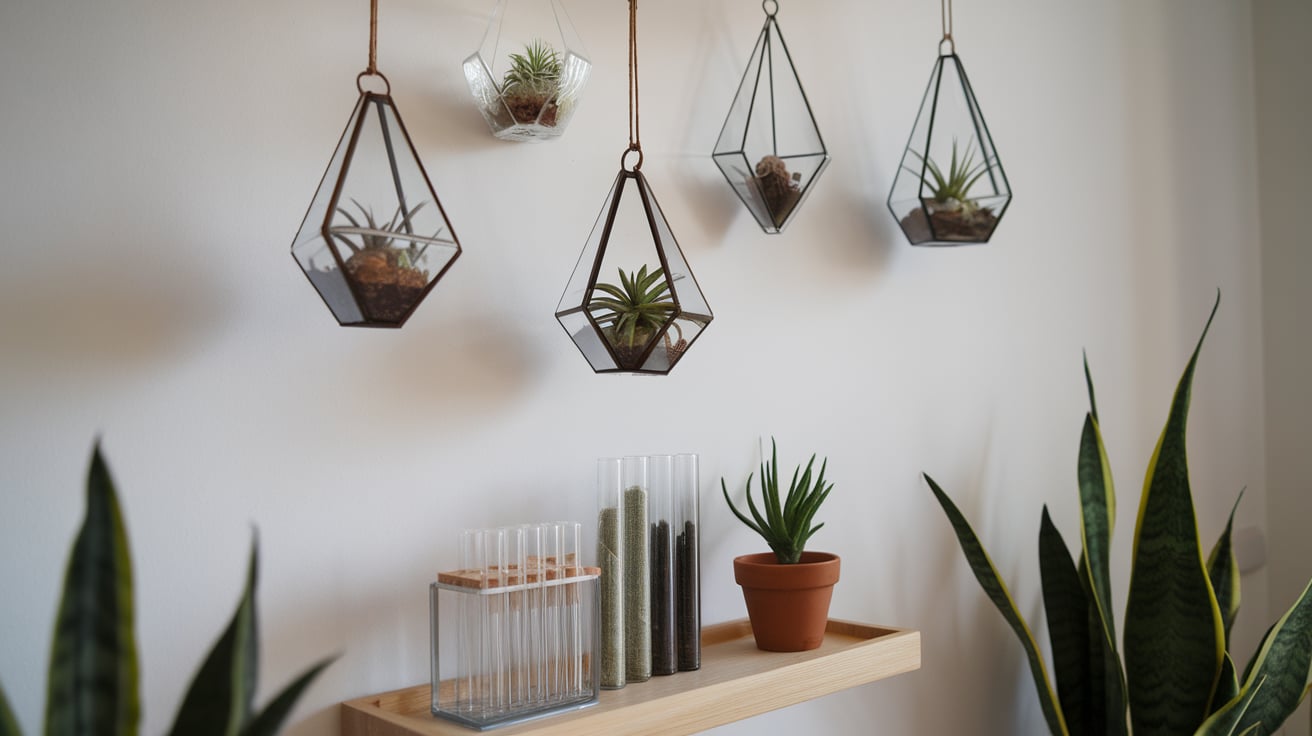
Conclusion
Creating a small space propagation station allows you to expand your plant family without overwhelming your living area. By choosing the right location, using space-efficient techniques, and maintaining a tidy setup, you can enjoy the rewards of plant propagation even in the tiniest of homes. Remember, successful propagation takes patience and practice, so don’t be discouraged if your first attempts don’t yield perfect results. With time, you’ll develop a green thumb that thrives in small spaces, filling your home with new life and greenery.

